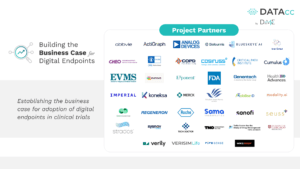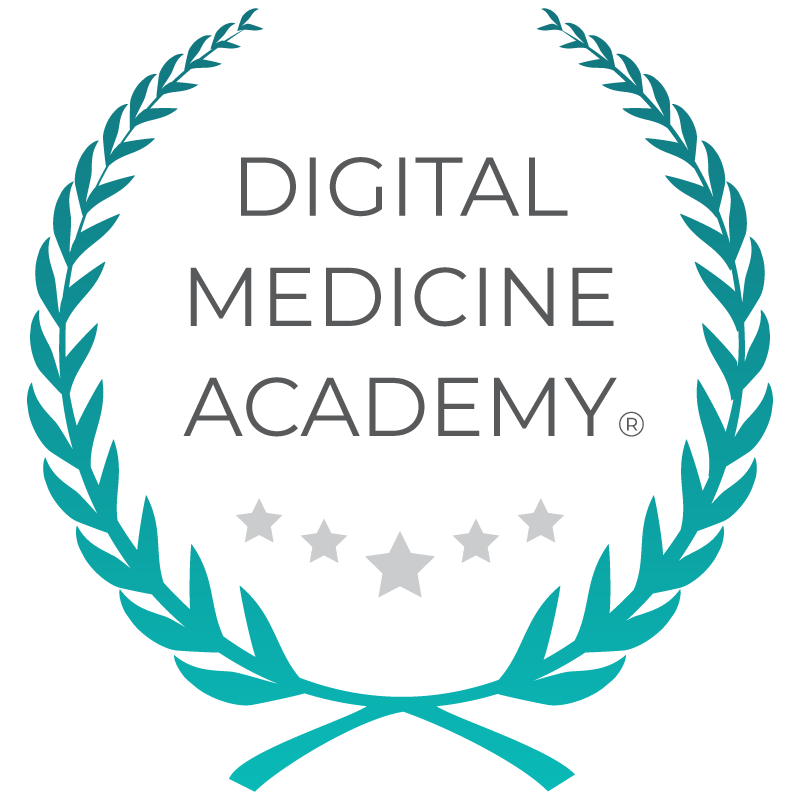
Advancing clinical research through strategy, evidence, and collaboration
The digital transformation of clinical trials is no longer a vision of the future—it is happening now. Digital endpoints, derived from data captured by digital health technologies (DHTs), are gaining traction as critical tools for modernizing drug development. With over 500 digital endpoints cataloged in the Digital Medicine Society’s (DiMe) Library of Digital Endpoints since 2019, the industry has made significant progress in defining and validating these measures. However, widespread adoption remains challenging due to operational and financial hurdles.
At the Digital Health Measurement Collaborative Community (DATAcc) by DiMe, we recently embarked on a multi-stakeholder initiative to tackle one of the most persistent barriers to adoption: building a compelling business case for including digital endpoints in clinical research. This project brought together leaders from across the industry to address the values of digital endpoints and the financial rationale needed to drive their integration at scale, and build open-source resources to advance the use of digital endpoints.
What emerged from this collaborative effort wasn’t just validation of their value, but a deeper understanding of what it will take to fully realize their potential. As we reflect, three key themes emerged from this collaboration: the importance of aligning innovation with business priorities, reducing uncertainty through evidence, and more transparent knowledge sharing.
Align innovation with business goals
Aligning scientific innovation with organizational goals remains essential for long-term impact. While clinical and R&D teams may recognize the value of digital endpoints in improving patient-centricity, data granularity, and real-time insights, those advantages must be translated into language that resonates across the organization.
Organizations are more successful at implementing digital endpoints when they embed them within broader enterprise goals. Whether reducing trial timelines, improving decision-making speed, or decreasing patient burden to increase retention, these outcomes matter to every function. It’s not about framing digital endpoints as a novel technology; it’s about positioning them as a strategic asset that aligns with the goals of the business.
True adoption comes when organizations stop treating digital measures as a niche innovation and start incorporating them into the fabric of their clinical development strategies.
Replace perception with proof
Throughout the project, one theme echoed across conversations: uncertainty is a major barrier. Sponsors are concerned about operational risk and unclear ROI. While these concerns are valid, many stem from a lack of shared evidence, rather than a lack of potential.
Replacing perception with proof is essential. It is imperative to equip decision-makers with real-world examples of what’s worked. Demonstrating impact through documented experiences, outcomes, and measurable returns reduces skepticism and builds confidence.
The path to digital endpoint adoption requires tangible evidence that shows the technology works, adds value, and can be deployed effectively within existing regulatory and operational frameworks. While the current body of evidence may still be limited, we must make the most of what we have today and continue to generate and share new findings so the field can learn, adapt, and advance together.
Strengthen the ecosystem for sustainable progress
This brings us to another critical insight from this initiative: accelerating the adoption of digital endpoints isn’t just about enabling individual organizations; it’s about strengthening the ecosystem as a whole. No company, trial, or technology can move the field forward in isolation. What’s needed is a more connected, transparent, and collaborative environment where progress in one corner of the industry unlocks progress elsewhere.
This means creating a shared foundation of knowledge, evidence, and best practices that others can build on. Ecosystem strength comes from openness. When organizations commit to sharing what works and what doesn’t, they contribute to a collective learning loop that benefits everyone. It fosters trust across stakeholders, improves confidence in emerging tools, and ultimately, accelerates the responsible adoption of digital technologies that benefit patients everywhere.
The future of digital endpoints doesn’t rest in any one organization’s hands. It will be built through continued collaboration, transparency, and shared commitment to doing what’s right, not just for business, but for science and patients.
Turning momentum into movement
This initiative reinforced a critical truth: successfully integrating digital endpoints into clinical research is not solely a technological challenge; it’s a strategic, operational, and ecosystem-wide endeavor. By aligning innovation with enterprise goals, replacing uncertainty with evidence, and strengthening the broader ecosystem through shared knowledge and collaboration, we can transform digital endpoints from promising tools into powerful drivers of change.
The future of clinical trials is already unfolding, and digital endpoints are central to its evolution. Realizing their full impact will require continued commitment across the industry to build better trials and a more connected, efficient, and patient-centered research enterprise.
Progress won’t come from isolated wins. It will come from a collective movement that turns today’s momentum into tomorrow’s standard.
And for the patients we serve, that future can’t come soon enough.
Get involved
As we continue advancing digital health, we’re focusing on one of the most pressing global challenges: mental health. DATAcc is leading the charge in developing a core digital measure set for common mental health disorders—a critical step toward shaping the future of care for researchers, clinicians, regulators, patients, and payors. There’s still time to get involved! Don’t miss your chance to be part of this initiative.




